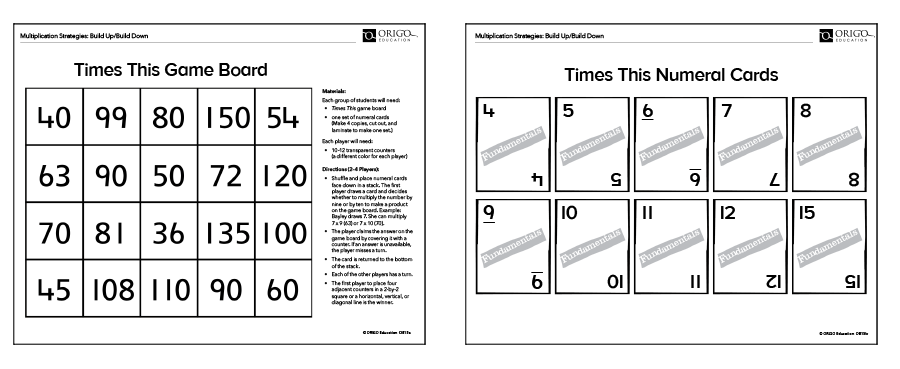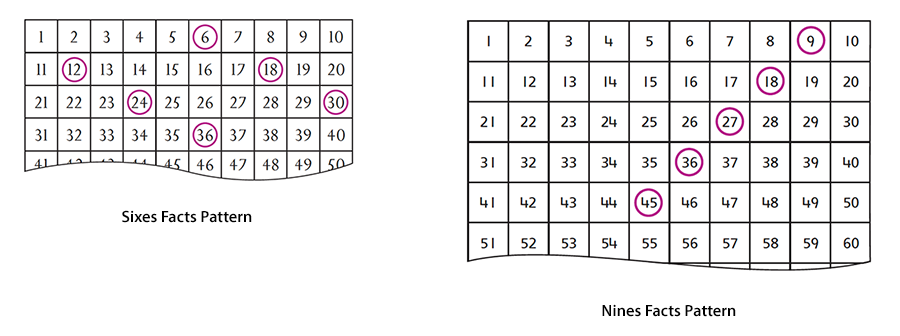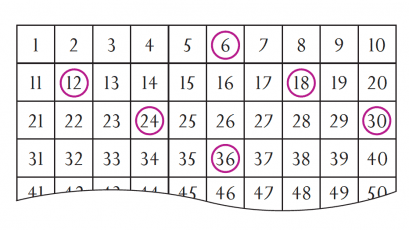Insights
Effective Strategies for Mastering the Nines and Sixes
The nines and sixes multiplication facts are a breeze with the build-down and build-up strategies!
The 6s and 9s multiplication facts are sometimes considered harder to learn than the other basic facts. With the right foundation and the multiplication strategies described in this article, they can be a breeze! Let’s start with the foundation.
- Fluent with tens and fives facts? Check!
- Visualizes quantities with arrays? Check!
- Partitions quantities efficiently? Check!
Now, on to the strategies…
Introduce the 6s and 9s Strategies
Begin by using cards like the ones shown below to help students visualize the relationship between the nines and tens facts and relationship between the sixes and fives facts.
Students figure out the 9s multiplication facts by “building down” from a known 10s fact. For example, students can think of 9 x 3 as the same as ten groups of three less one row of three. Notice how the card can be folded to cover up the bottom row of the array.

Likewise, students can “build up” from a known fives fact to figure out a sixes fact. The card below shows that 6 x 3 is just one more row of three added to the 5-by-3 array.

6s and 9s Multiplication Facts Game: Reinforce and Practice the Strategies
Games are a great way to reinforce and practice number fact strategies. Click here to download the Times This game to play in your classroom. This game practices the nines facts in a fun way!

Materials
Each group of students will need
- Times This game board
- one set of numeral cards (Make 4 copies, cut out, and laminate to make one set.)
Each player will need
- 10-12 transparent counters (a different color for each player)
Directions (2-4 Players)
- Shuffle and place numeral cards face down in a stack. The first player draws a card and decides whether to multiply the number by nine or by ten to make a product on the game board. Example: Bayley draws 7. She can multiply 7 x 9 (63) or 7 x 10 (70).
- The player claims the answer on the game board by covering it with a counter. If an answer is unavailable, the player misses a turn.
- The card is returned to the bottom of the stack.
- Each of the other players has a turn.
- The first player to place four adjacent counters in a 2-by-2 square or a horizontal, vertical, or diagonal line is the winner.
Exploring patterns and having students share what they notice can also solidify their number facts. Have students circle the products of the facts on hundreds charts. Ask questions such as, What patterns do you see? How are the circles arranged? What do you notice about the digits of the circled products?

Extend the 6s and 9s Strategies
Encourage students to apply these multiplication strategies for 6s and 9s to numbers beyond the basic facts. For example, these strategies can be extended to solve 19 x 3 and 26 x 6. See these ORIGO One videos for more.
Teaching the build-down strategy for multiplication from ORIGO Education on Vimeo.
Teaching the build-up strategy for multiplication from ORIGO Education on Vimeo.
The build-down and build-up multiplication strategies are two of many important strategies included in The Box and Book of Facts for Multiplication and Division from ORIGO Education. Use these strategies to grow the fact fluency and mental computation power of YOUR students!
Click HERE for the downloadable resources for this article!
About ORIGO Education
ORIGO Education is dedicated to making learning meaningful, enjoyable and accessible for all students with Pre-K and Elementary print and digital instructional materials, as well as professional learning for mathematics.
![]()




